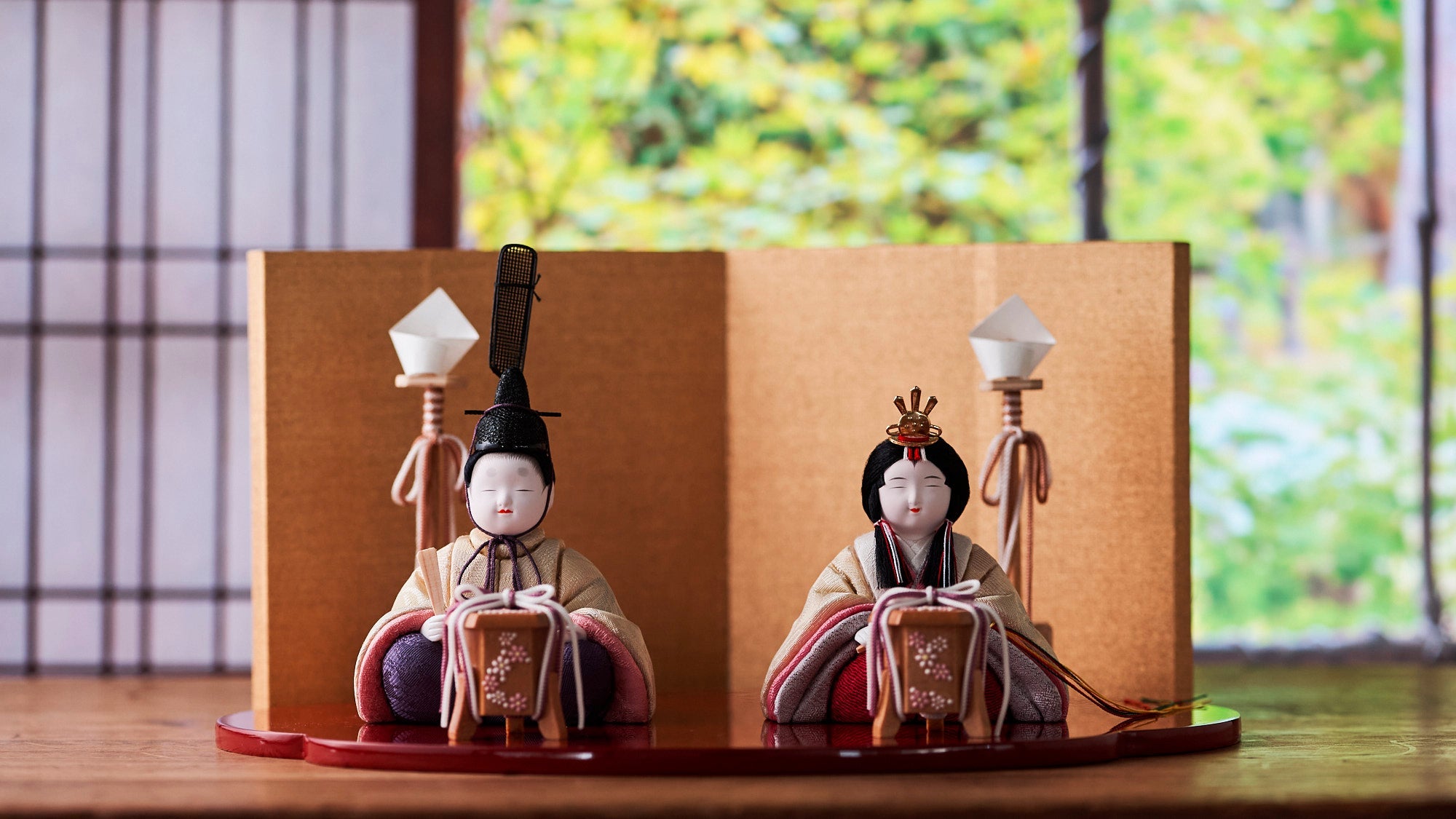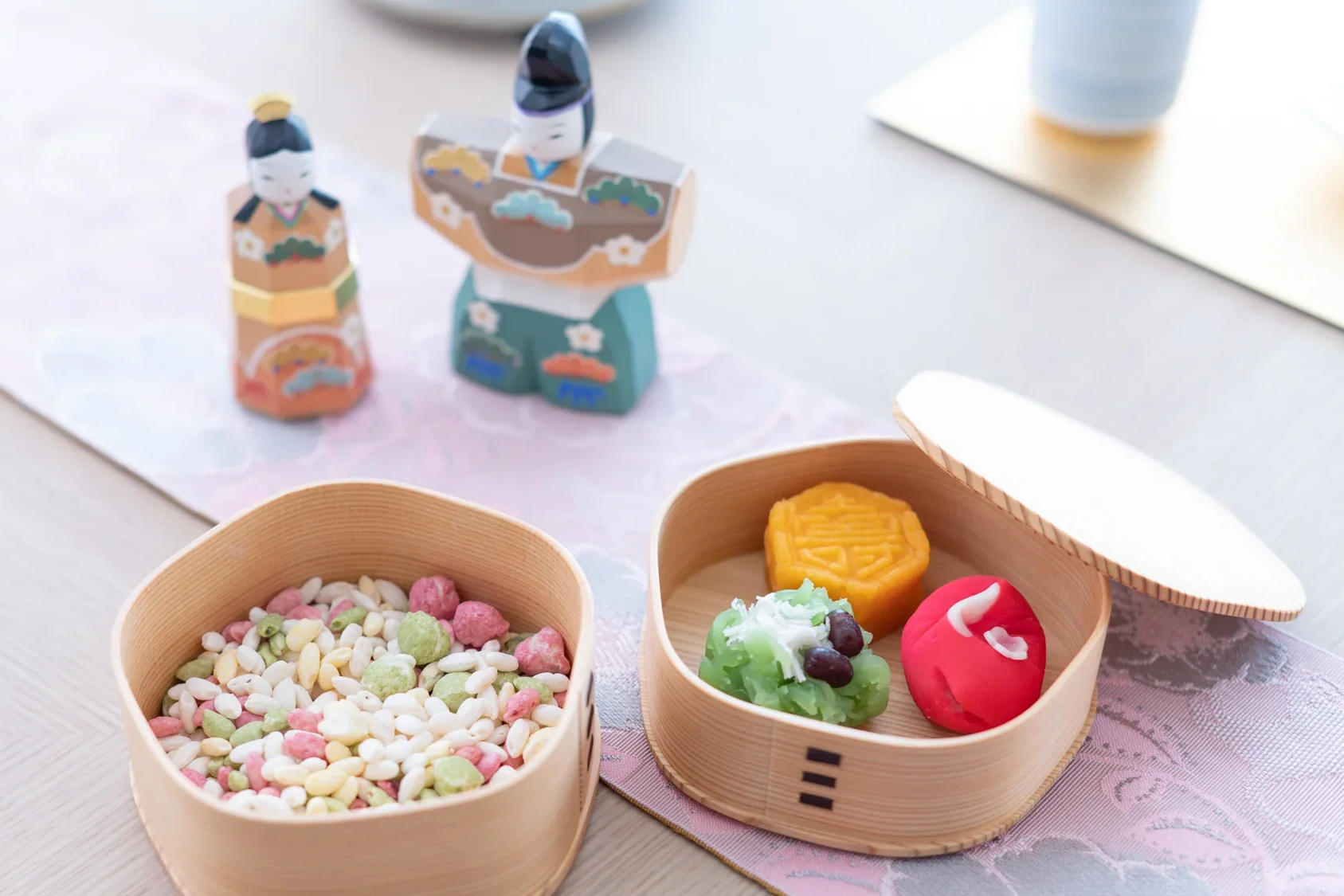
Hinamatsuri: A Special Day for Girls
Written by Team MUSUBI
The early days of February signal the start of Hinamatsuri celebrations. Hinamatsuri is a seasonal festival that honors the healthy growth and happiness of young girls. To commemorate this tradition, homes are adorned with traditional hina dolls that bestow an aura of happiness and dignified elegance.
Learn about this time-honored festive occasion and join us in embracing one of the most joyful and happiest festivities of the year.
tables of contents
Hinamatsuri

Hinamatsuri, also known as Momo-no-Sekku (Peach Festival), is a celebratory tradition observed on March 3 to wish for the well-being and happiness of young girls. The custom of Hinamatsuri originated from Joshi-no-Sekku, one of the five seasonal festivals that was designated in the Edo period (1603–1868 CE).
Unlike Children's Day observed on May 5, Hinamatsuri is not a national holiday but is widely celebrated throughout Japan. The symbolic colors of pink, white, and green brighten store windows and decorate classrooms in kindergartens and elementary schools, adding to the festive atmosphere. Adorable hina dolls gracefully dressed in kimonos decorate households.
Hina Dolls

Back in the Heian period (794–1185 CE), commoners bestowed their misfortunes upon paper dolls and set them adrift in rivers in hopes of "washing away" afflictions and illnesses.
At the same time, children of aristocratic families played a game called hina-asobi also using paper dolls. Eventually, these two separate styles of dolls crossed paths to become the original form of today's Hina dolls.
Following the advancement in doll-making techniques such as kimekomi in the Edo period, hina dolls became more refined, featuring detailed decorations and intricate craftsmanship. Unlike earlier dolls made with carved wood or clay, kimekomi dolls were created by embedding fabric into precisely carved grooves in a wooden or composite base. This method gave them a soft, elegant appearance while allowing for intricate kimono patterns and delicate expressions. Kimekomi dolls remain a beloved style today, admired for their refined beauty and compact size.

Over time, hina dolls came to be showcased in households of the general population on Hinamatsuri as "guardian dolls" to protect young daughters. Traditionally, a full hina doll display included fifteen dolls and various small accessories such as miniature furniture pieces, folding screens, and lamps, displayed on a seven-step stand. The ensemble emulates the magnificence and grandeur of an imperial court with lifelike dolls and intricately crafted accessories.

But following a shift in housing with more people residing in smaller living spaces, hina dolls have taken on a more compact stature. Today, a basic set consists of two dolls, an emperor and an empress of the imperial court, placed on a decorative stand with a folding screen.
Dolls now come in various materials such as porcelain, wood, lacquerware, and fabric. Among them, kimekomi dolls still stand out for their exquisite craftsmanship, featuring finely layered fabric garments and serene, expressive faces. Their timeless artistry makes them a beautiful and meaningful addition to any home. These kimekomi doll sets from Kakinuma Ningyo showcase the fine beauty of age-old techniques, from the elegant folds of their kimono to the serene expressions on their faces.
While kimekomi dolls are well-known for their delicate charm, Kutani ware hina dolls showcase mastery with their finely crafted porcelain. Their detailed expressions and elaborate kimono patterns reflect the beauty of Kutani ware, making them a stunning addition to any home, whether displayed on a small shelf or within a dedicated seasonal setting.
How We Enjoy Hinamatsuri Today
On March 3, family members gather to rejoice and wish for the well-being of the young girls in the family.
Decorations

The joy of this occasion begins the moment hina dolls are brought out from their boxes and carefully arranged for display. While there is no strict rule on when to set them up, they are traditionally displayed after Setsubun, celebrated on February 3. Delicate plum blossom branches often accompany the display, enhancing the festive and cheerful atmosphere of the occasion.
Along with the hina dolls and plum blossoms, households enjoy many other decor ideas with a Hinamatsuri motif. Tableware and paintings designed with these motifs are seen on tables and walls around this time of year.

Festive Food
When family members gather on March 3, they enjoy the charming display of dolls together and eat various festive menus including some of the following dishes. In recent years, bakeries have begun to sell cakes with hina doll decorations and these cakes have become popular desserts.
Chirashi
Chirashi, or chirashizushi, is the main dish served for Hinamatsuri. Colorful and auspicious ingredients including shrimp, lotus roots, and thinly cut egg pancakes are arranged beautifully on top of sushi rice.

Clam Soup
Accompanying the sushi is hamaguri clam soup, with clams gently simmered in delicately flavored dashi. When serving, the inner sides of the clams face upwards, with the meat placed on both halves of the shell. This practice symbolizes the wish for a young girl’s happy and harmonious marriage, as clam shells perfectly match only with their original pair, representing an ideal union.

Hishi Mochi
This is a triple-layered sweet mochi treat that represents new buds sprouting from the winter snow. The red (pink) and green hues ward off evil spirits, and the white symbolizes longevity and was originally made from water caltrop (hishi).
Hishi mochi is commonly placed as a decorative item near hina dolls.

Shirozake
Shirozake, a cloudy, mildly sweet sake made from steamed rice and malt, has been enjoyed during Hinamatsuri since the Edo period. Once the customary drink of the celebration, it remains a tradition, though the non-alcoholic amazake has become more popular, allowing people of all ages to partake in the festivities.

Hina Arare
A must-have sweet treat for Hinamatsuri, hina arare is a delightful mix of sugar-coated puffed rice and crispy rice crackers. Hina arare’s iconic shades harmonize with the soft, delicate hues of seasonal decorations.

A Special Day for Girls

Hinamatsuri finds its origin in wishing for the happy and long, healthy lives of young girls. It is a time that reminds us of the love we have for our family. And through hina dolls, families express their joy in honoring their beloved daughters.
After Hinamatsuri, we pass on the baton to Tango-no-Sekku (Boy's Day) on May 5. Stay tuned for our coming seasonal blog that explores the tradition and customs of this special day.









Leave a comment
This site is protected by hCaptcha and the hCaptcha Privacy Policy and Terms of Service apply.